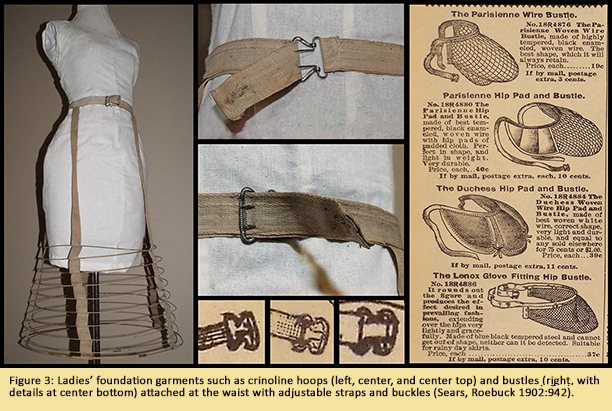Curator's Choice 2015
The Buckle Generic
January 2015
By Sara Rivers Cofield, MAC Lab Federal Curator
For this month’s Curator’s Choice, I present a ubiquitous, mass-produced, and very ordinary buckle from the second half of the 19th century or early 20th century (Figure 1). Why is this interesting? Because every other Curator’s Choice I’ve ever done has focused on something unusual, special, or personal to the inhabitants of a site, and it’s a change of pace to feature an artifact that is just plain and common. Unique artifacts often lend themselves to one relatively narrow interpretation, but that doesn’t work for the buckle generic.
By the mid-19th century mass production and interchangeable parts had been adopted by the clothing industry, so interpretation of clothing-related artifacts from this period can be full of possibilities. While buckles of the 18th century regularly came in forms that were specific for use on items such as shoes, spurs, and knee breeches, buckles that were produced to be generic and useful on many things defy that kind of categorization.

The buckle type featured here was patented by 1855, and several variations of the form were introduced in subsequent years (Figure 2). These buckles could be made of ferrous alloys (e.g. iron and steel) or copper alloys (e.g. brass), and some are marked with patent dates or a bit of decoration. The buckles were used for straps and they were not meant to be seen when people were fully dressed, but their versatility is evident when you look at old catalogs and surviving clothing. They show up on ladies’ foundation garments (Figure 3), men’s vests (Figure 5), cinches for early blue jeans (Figure 4), and even “suspensories” for men (Figure 6). In other words, when this artifact is found it isn’t possible to point at it and say, “that’s for a [insert garment description here]!” No, the interchangeable buckles of the industrial era call for curators and archaeologists to abandon the idea of narrowing interpretation. Instead it’s an opportunity to make a list of everything that might have used this buckle, and as the list grows, we are exposed to many different items of daily life that enrich our understanding of how industrialization changed the way people lived and dressed.
| References |
|
| Mirken, Alan, editor |
| 1970 |
1927 Edition of the Sears, Roebuck Catalogue. Bounty Books, Crown Publishers, Inc., New York, New York. |
|
| Sears, Roebuck Co. |
| 1902 |
The 1902 Edition of the Sears, Roebuck Catalogue. 1986 Edited reprint by Bounty Books, Crown Publishers, Inc., New York, New York. |
|
| U.S. Patent Office |
| 1855 |
Patent US13218, Generic Buckle, Sheldon S. Harshorn. Google Patents, http://www.google.com/patents/US13218, accessed 29 December 2014. |
|
| Union-Made |
| 2012 |
August 16. Spotted on ebay: Early 1900s Levi Strauss Salesman Sample. Vintage 20s OZARK Whale Brand ONE POCKET Hickory Stripe PITCHFORK Overalls 42 O. Posted by invtgwetrust, eBay item 270910935126. http://union-made.blogspot.com/2012/08/spotted-on-ebay-early-1900s-levi.html eBay, accessed 10 November 2014. |
|
|
|
|
|